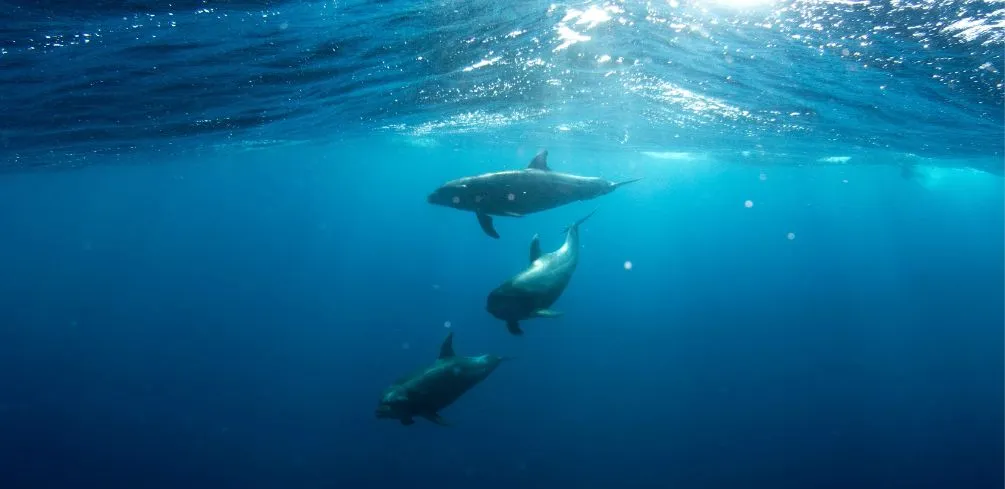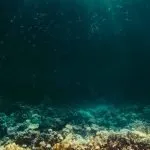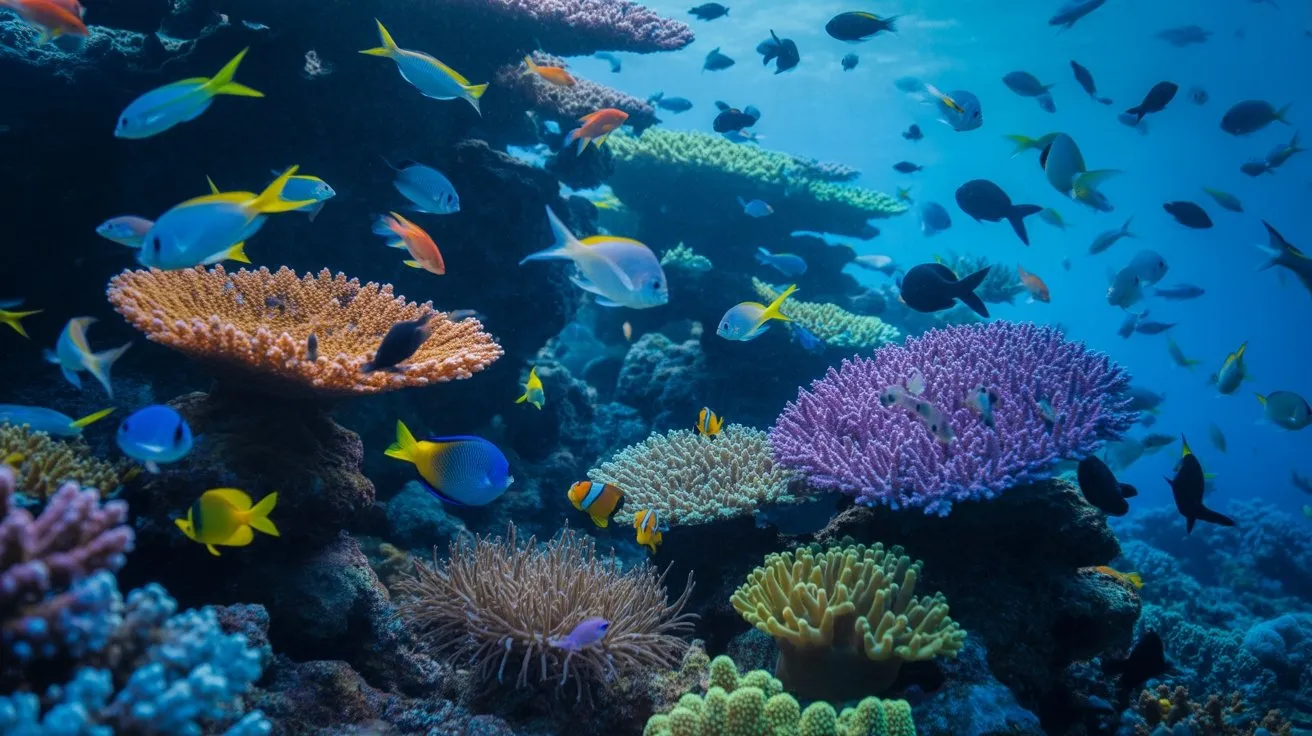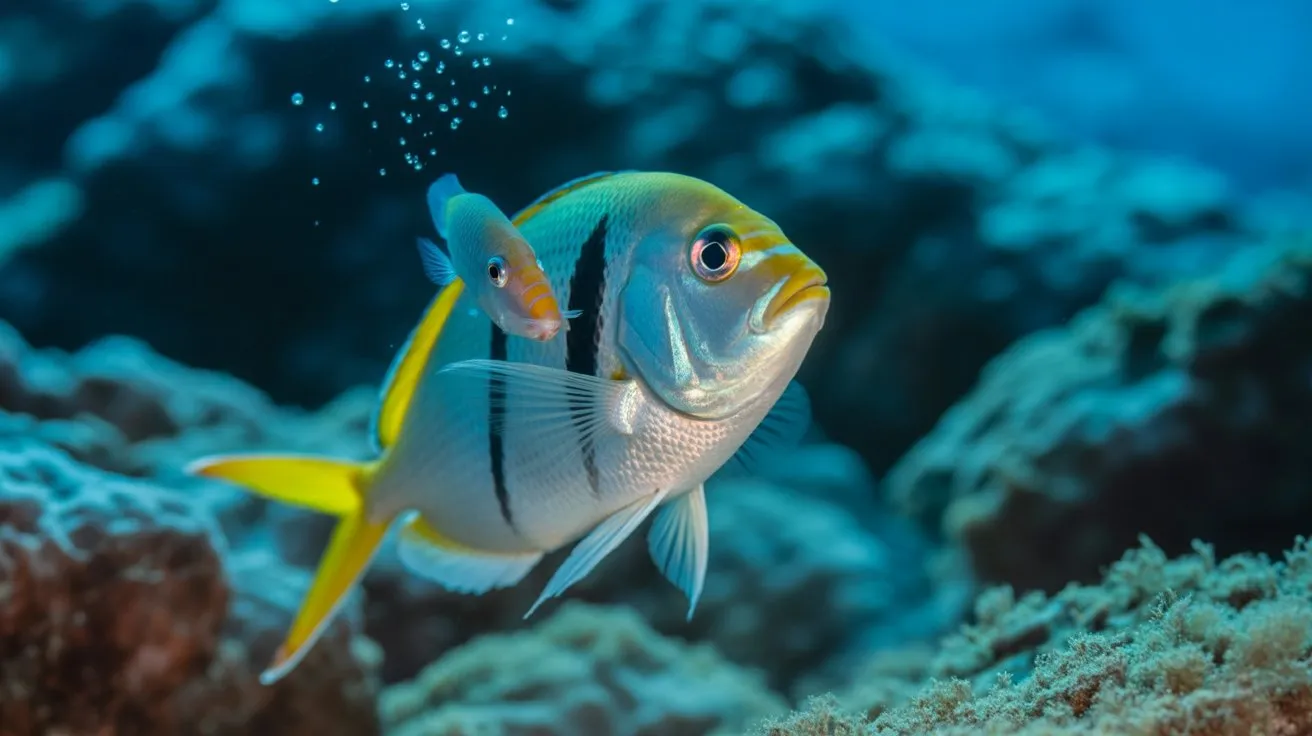The ocean is an ancient and mysterious world, a place where time stands still and the secrets of life are kept. It is in these depths that marine mammals have been playing their part in the delicate balance of the ocean ecosystem for centuries.
From whales to dolphins, seals to walruses, these creatures are essential components in maintaining the complex web of life beneath the waves.
When we think of marine mammals, we often conjure up images of playful dolphins or majestic whales breaching off distant shores. But there is much more to them than meets the eye; each species has a vital role to play in keeping our oceans healthy and vibrant.
From providing food for other sea creatures to helping spread nutrients around, these animals are vital for maintaining a balanced aquatic environment.
In addition to their ecological roles, marine mammals also provide us with many benefits, from tourism revenue to simply enjoying watching them as they frolic in their natural habitat. They can even help provide insight into our own behavior and cultural practices by revealing how their social structures work within the larger oceanic system.
Understanding their importance helps us recognize just how interconnected our lives are with those who inhabit beneath the waves.
Introduction To Marine Mammal Biology
Marine mammal biology is an incredibly fascinating and diverse field of study. From the smallest species, such as the vaquita porpoise, to the largest, like the blue whale, these animals are integral components of ocean ecology.
There are over 130 different marine mammal species found in aquatic habitats around the world. Each species plays a unique role in its environment and can be divided into two main groups: cetaceans (whales, dolphins, and porpoises) and non-cetaceans (seals, sea lions, and walruses).
Cetacean behavior is particularly interesting due to its complex social structure. For example, some species utilize vocalizations to communicate with each other underwater and have been known to form cooperative hunting strategies.
Non-cetaceans also display unique behaviors; seals use their whiskers to detect prey from far away distances, while sea lions use their flippers to grip food items underwater.
The role of marine mammals in the ocean ecosystem is invaluable; they provide a source of food for other organisms as well as help regulate population dynamics by controlling prey numbers. In addition, they help maintain healthy ocean conditions by cycling nutrients throughout the environment.
As top predators, they play an important role in keeping ecosystems balanced – something that would be impossible without them!
Types Of Marine Mammals
Now that we have a better understanding of marine mammals let’s look at the different types. The most commonly known are dolphins, whales, sea lions, walruses, and polar bears. All of these species possess specific adaptations that make them well-suited to their respective aquatic environments.
Dolphins are incredibly intelligent and social animals that belong to the family of Delphinidae. They typically inhabit warm and temperate seas but can also be found in colder waters such as the Arctic Ocean. Dolphins use echolocation to locate food and communicate with each other underwater.
Whales belong to the order Cetacea, which is divided into two suborders: baleen whales and toothed whales. Baleen whales filter feed on krill, plankton, and small fish through large plates in their mouths, while toothed whales actively hunt for their prey using their sharp teeth.
Whales can be found in all oceans around the world, but some species migrate long distances between wintering grounds and summer feeding grounds annually.
Sea lions are members of the family Otariidae which includes fur seals as well as sea lions. They inhabit tropical, subtropical, and temperate waters around the globe, where they come together in large colonies for breeding purposes. Sea lions are highly adapted for life in water due to their thick fur coats, webbed feet, and ability to hold their breath for extended periods of time.
Walruses are part of the family Odobenidae which includes only one living species – Odobenus rosmarus – that inhabits Arctic waters from Alaska through Russia down to Greenland. Walruses feed mainly on molluscs, but they will also eat crabs, shrimp, and worms when available.
They use tusks made out of ivory for digging into ice or breaking open shells of prey items as well as defending themselves against predators or rivals during mating season.
Polar bears belong to the family Ursidae which includes eight other bear species, such as black bears and brown bears, among others. Polar bears live mainly on pack ice throughout circumpolar areas such as Canada, Alaska, Norway, and Russia, where they rely on seals as their primary prey source.
These powerful predators have evolved several adaptations that enable them to survive in extremely cold conditions, including an insulating layer of blubber under their skin and white fur that helps camouflage them from potential predators or prey alike.
Marine mammals have diverse lifestyles that allow them to thrive in many ocean habitats around the world despite facing numerous threats from human activities such as overfishing or pollution. Their importance within the ocean ecosystem is unquestionable; without them, our planet would be a very different place indeed!
These include:
- Dolphins
- Whales
- Sea lions
- Walruses
- Polar bears
Contributions To Ocean Ecosystems
Marine mammals play an important role in the ocean ecosystem. They are essential to maintaining balance and health. They provide food for other species, help maintain healthy populations of prey, and serve as indicators of ocean health. Marine mammals also help regulate the climate and protect marine habitats from human impact.
These contributions are vital to keeping the ocean ecosystem functioning properly. For example, seals, sea lions, dolphins, and whales all feed on fish and other marine life that helps keep their populations stable.
This helps maintain a healthy balance of prey species in the ocean, which can help protect other species from overfishing or predation. Additionally, they provide shelter for other species, such as coral reefs which act as nurseries for many fish species and help reduce coastal erosion by providing wave protection.
Furthermore, marine mammals are able to adapt quickly to changing conditions in their environment due to their high intelligence and ability to learn new behaviors quickly. This makes them ideal candidates for conservation efforts as they can be used as a baseline when monitoring changes in ocean health.
Their ability to adapt also allows them to survive in more extreme environments that would otherwise be too hazardous for other species, making them key players in the overall conservation of the marine environment and its inhabitants.
Overall, marine mammals play an integral part in keeping our oceans healthy by providing food sources, wave protection, regulatory services, and acting as indicators of ocean health. Marine conservation efforts should continue to focus on protecting these incredible creatures that are so essential for our planet’s well-being.
Threats And Conservation Efforts for Marine Mammals
The role of marine mammals in the ocean ecosystem is threatened due to a variety of factors, from species extinction and climate change to human activities such as poaching, pollution, and over-fishing. These issues have caused declines in marine mammal populations around the world, with some species facing serious risk of extinction.
Fortunately, there are many conservation efforts underway that aim to protect marine mammals and their habitats. Organizations like the World Wildlife Fund (WWF) focus on conserving ocean ecosystems through research and community outreach initiatives.
Governments also play an important role by introducing regulations and policies that protect marine species and encourage responsible fishing practices.
In addition to these efforts, individuals can take action by supporting conservation organizations or engaging in activities like beach clean-ups or educational programs.
Here are three ways we can help conserve marine mammals:
- Educate ourselves about ocean conservation issues
- Support local conservation initiatives
- Reduce our plastic consumption
By understanding the threats facing marine mammals and taking proactive steps toward protecting them, we can ensure that these vital creatures remain part of our oceans for generations to come.
Research And Studies of Marine Mammals
Research and studies have been conducted to better understand the role of marine mammals in the ocean ecosystem. Conservation efforts are vital when it comes to studying these animals as they are considered keystone species. This means that their presence affects the entire oceanic habitat and its inhabitants.
Marine mammal research has revealed how certain aquatic species interact with each other, their environment, and their prey. By researching the behavior of these animals, scientists can learn more about how they contribute to the food web and the overall health of the ocean. Studies also provide insight into how changes in climate and human activities impact these ecosystems.
The findings of research and studies help inform conservation efforts to protect marine mammals and their habitats. Through this knowledge, we can continue to observe, monitor, and conserve marine life while preserving the delicate balance of our oceans.
Frequently Asked Questions
What Is The Most Effective Way To Help Marine Mammals?
When it comes to helping marine mammals, there are a few key strategies we can use. One of the most effective ways is to promote marine mammal conservation.
This includes protecting their habitats, reducing pollution, and conserving their food sources. Additionally, by protecting the ocean’s ecosystem, we can ensure that marine life will thrive in its natural environment.
Moreover, sustainable fishing practices are essential for preserving marine mammals and their habitats. Responsible anglers should always practice catch-and-release and use circle hooks instead of traditional J-hooks when bait fishing. Plus, they should avoid overfishing and other unsustainable practices like trawling, which can damage coral reefs and other fragile ecosystems.
Finally, responsible tourism activities are important for supporting marine mammal conservation efforts. Tourists should participate in eco-friendly whale-watching tours that adhere to strict regulations such as limiting viewing time and keeping a safe distance from the animals.
Furthermore, they should support local businesses that prioritize conservation initiatives over profit margins; this will help ensure the long-term health of our oceans and their inhabitants.
How Long Have Marine Mammals Been In Existence?
It’s like looking through a window into the past – how long have marine mammals been around? To answer this question, we must look back to the evolution of these magnificent creatures. Marine mammal fossils tell us that they have been around for millions of years and are still going strong today.
Marine mammal origins can be traced back to the Eocene period, about 55 million years ago. During this time, many primitive species emerged and evolved over the course of millions of years. This is why marine mammals have such an incredibly diverse range of species; each one has its own unique history and life span.
To understand marine mammal history, it’s important to look at their individual species and how they have adapted over time. For example, some species have evolved longer lifespans while others remain relatively short-lived. Moreover, some marine mammals have had to adapt to changing ocean conditions in order to survive and thrive in their environment.
No matter what their individual story may be, it’s clear that marine mammals have been around for an incredibly long time – longer than most of us can even imagine! From ancient fossils to modern adaptations, the incredible journey of these creatures is something that continues to fascinate us all.
Are There Differences Between Marine Mammals And Land Mammals?
Are there differences between marine mammals and land mammals? There certainly are. Marine mammals have adapted to living in the ocean and, as such, have several unique characteristics that separate them from land mammals.
They have specialized body shapes and behaviors that help them survive in the ocean environment. From their thick layers of blubber for insulation to their streamlined bodies for swimming, these adaptations enable marine mammals to thrive in the ocean.
In comparison, land mammals have adapted to living on dry land with adaptations such as hooves for running on solid ground or fur for warmth in cold climates. Land mammal ecology is quite different from marine mammal behavior; they have very different needs and survival strategies. For example, land animals may hibernate during cold weather, but marine animals can’t do this because they would drown!
Conservation efforts are underway to protect and promote the health of both marine and land mammal populations. However, there is still much work that needs to be done to ensure that the habitats of these animals remain healthy and safe for generations to come.
Conservationists are working hard to educate people about the importance of preserving marine mammal habitats while also protecting endangered species of both land and sea mammals.
Protecting the future of our planet’s biodiversity requires a unified effort across all types of ecosystems – terrestrial and aquatic alike – so that we can continue to enjoy its beauty for years to come.
How Are Marine Mammals Affected By Climate Change?
Climate change is one of the biggest threats to marine mammals today. Take, for example, the Hawaiian monk seal population.
Their numbers have been declining due to rising sea temperatures and ocean acidification, making it difficult for these seals to find food and reproduce. This is just one example of how climate change is affecting marine mammals and their habitats.
The effects of climate change are far-reaching. As ocean temperatures rise and water levels fluctuate, marine mammal behavior can be affected in a variety of ways. For instance, they may be forced to migrate to new areas looking for food or more suitable living conditions.
In addition, changes in the ocean ecosystem can have direct impacts on the species that rely on it for survival. This could include decreased access to prey or an increase in competition for resources from other species.
The impact of climate change on marine mammals is complex and can be hard to predict. However, understanding how different species are affected will help us better understand the role they play in our ocean ecosystems and create strategies that may help protect them from further harm.
By taking action now, we can help ensure these incredible creatures remain a vital part of our planet’s future health and well-being.
What Are The Most Common Activities Undertaken By Research And Studies Of Marine Mammals?
When it comes to research and studies of marine mammals, there are a few common activities that take place. From studying their behavior and movements to observing the impacts humans have on ocean ecosystems, marine mammal research helps us better understand these creatures and how they fit into conservation efforts.
One of the main areas of focus when it comes to marine mammal studies is understanding their behavior and habits. They look at how they interact with other animals in the ecosystem, as well as how they behave in certain situations.
Additionally, researchers often study their migration patterns and feeding habits. By collecting this data, scientists can gain deeper insight into the lives of these animals and make more informed decisions about how we can protect them.
Another area of research that is important for marine mammals is understanding the impacts humans have on ocean ecosystems. This includes things like pollution or overfishing, which can have devastating effects on these creatures’ habitats.
Researchers can track changes in water quality or levels of food available to see how human activities are impacting marine life populations. This information then informs conservation efforts so that we can work together to ensure our ocean ecosystems remain healthy for generations to come.
Overall, research and studies of marine mammals play a key role in helping us better understand these creatures and protect them from harm. By gathering data about their behaviors, migration patterns, and habitats, we can gain insight into what’s necessary for their survival and develop effective strategies for conserving our precious ocean resources.
Conclusion
The ocean is a vast and mysterious world, home to many creatures, including our beloved marine mammals. These majestic creatures are integral components of the ocean ecosystem, and their roles in the ocean must be understood and respected if we are to have any hope of protecting them. We have a responsibility to do what we can to ensure their future survival.
The plight of marine mammals is an allegory for our own struggles as humans. Like them, we are vulnerable to the whims of climate change, pollution, habitat destruction, and other man-made threats.
We may not be able to control all of these forces, but if we come together and take steps to protect our planet’s resources, then perhaps one-day marine mammals will no longer have to worry about their existence.
Our responsibility as stewards of the environment includes ensuring that marine mammals continue to play their vital role in our planet’s ecosystems. We must remember that their fate is intertwined with ours; only by coming together and taking action can we both protect these creatures from extinction and ensure the future health of our oceans.





